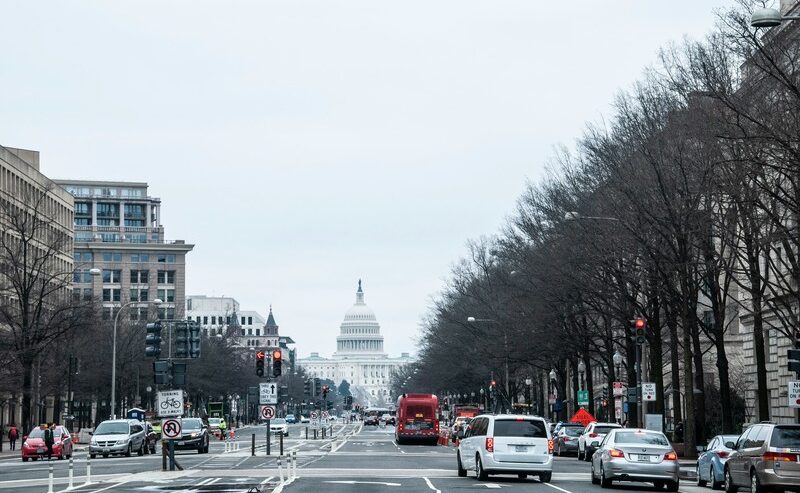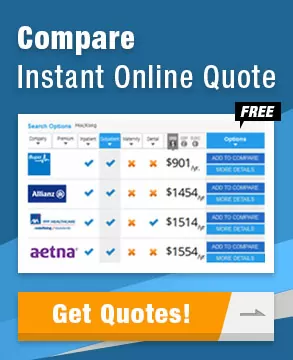Understanding the Cost of Health Insurance in America
Depending on specific factors such as your age and which state you live in, the cost of health insurance can be particularly high. Other factors such as smoking and income can also contribute to high health insurance costs.
Discover the world's top
health insurers.
Compare quotes with
a click of the button.
Are you an expat looking to relocate to the US? Are you looking for healthcare solutions in the US? Today, in this blog post, we’re gonna be demystifying the cost of health insurance in America to help you understand the potential expenses should you decide to relocate or travel there.
American Health Insurance Cost

The average monthly premium (the amount that you pay the insurance company) in America is $456 for an individual plan and $1,152 for a family. However, keep in mind that costs can vary depending on numerous factors such as age and location or plan selections.
The US government doesn’t provide health insurance for all its people, and health insurance isn’t mandatory for those living in the US. However, it is highly recommended since health insurance in the US is very expensive compared to other countries.
Average Health Insurance Costs by State
The first factor that contributes to health insurance costs in America is which state you live in. Below are some examples of average health insurance costs by state:
- Arizona: $410
- California: $432
- Florida: $471
- Hawaii: $469
- New Jersey: $441
- New York: $627
- Ohio: $413
- Texas: $461
Average Health Insurance Costs by Age
Another factor that contributes to your health insurance costs is your age, which basically means you will have to pay more as you grow older. Below are the average health insurance costs by age range:
- 0-14: $350
- 15-25: $381-$459
- 26-50: $468-$816
- 51-63: $852-$1,349
- 64+: $1,371
Please note that these health insurance costs by age and state are estimates and can fluctuate over time, depending on providers. For exact costs, please consult your insurance provider for details.
Other Factors That Could Affect Your Insurance Costs
![]()
Aside from basic factors such as your age and location, below are some other factors that could also affect your health insurance costs:
- Tobacco usage: Health insurers can’t deny coverage to smokers, but that also means they can charge higher premiums with additional conditions. This is because smokers have a higher risk of diseases.
- Income: When you buy a health insurance plan, the federal government will cover part of the cost, and how much they pay depends on your income. This means the less money you make, the more the government will cover. However, this only applies if your employer doesn’t offer you a health plan.
- Your Employer’s Size: If you use an employer-sponsored health plan, how much you pay depends on the size of your employer. The average deductible for a small company is $2,534 and $1,493 for a larger company.
How does the American Healthcare System Work?
America’s healthcare system can be rather convoluted due to a lack of any sort of national health system like most countries in the world. Any time you receive medical care here, either you or your insurance company has to pay for the medical fees.
Healthcare centers are operated by various types of organizations, such as the government, but most of them are private facilities, run for profit. Unless one qualifies for a social healthcare program, they will need to pay for their medical care on their own or through insurance.
America offers two types of social health programs- Medicare and Medicaid. Expats, however, will need the private health insurance they bought privately or receive from their employer.
Types of Health Insurance in America

Medicare (National Health Insurance)
Medicare is a social insurance program, funded at the federal level, which focuses mainly on aiding the older population (individuals over 65 years old) by covering their healthcare expenses.
Medicare covers around half of the healthcare fees of those who are enrolled. Meanwhile, the remainder is paid either by privately-bought health insurance or out-of-pocket.
Medicaid (National Social Healthcare Program)
Medicaid, America’s sole social healthcare program, is a federal and state program that helps alleviate the medical expenses of certain groups of people with limited income and resources.
Below are areas in which Medicaid covers:
- Inpatient and outpatient services
- Physician services
- Lab and x-ray services
- Home health services
Optional benefits include prescription drugs, case management, physical therapy, and occupational therapy
As opposed to Medicare, Medicaid provides free healthcare to the following groups of people:
- Low-income children
- Pregnant women
- Seniors
- Disabled people
Private Health Insurance
Most Americans and expats here purchase or receive private health insurance for themselves and their families through their employers.
Depending on the benefits and coverage provided by their employer-sponsored insurance, people tend to buy additional insurance plans to further their benefits. These could include inpatient treatment in addition to outpatient, pre-existing medical condition coverage, maternity, or dental coverage.
Frequently Asked Questions

Does my state use age to determine health insurance rates?
Most states will use your age to determine your health insurance rates except New York and Vermont. If you live in any other state, your health insurance fees rise in tandem with your age.
Do employers determine health insurance plans by age?
Whether or not your employer determines your health insurance plan by your age depends on the size of the company. Large companies don’t determine plans by age but are allowed to under some circumstances. Smaller companies with 50 employees or less can determine plans by age.
Why is health insurance so expensive in the US?
High health insurance costs in the US can be attributed to multiple reasons. These include new, innovative healthcare technology which led to more expensive but better procedures and products.
Conclusion
In conclusion, your exact health insurance cost in America will vary depending on several factors. It could be as simple as your age and location or more complex factors such as your income or employer.
Whether you’re a local yourself or you’re an expat from elsewhere looking to settle down in the States, it’s important to consider your exact healthcare needs and desired coverage carefully before selecting your insurance plan.
Being a leading international health insurance broker, Pacific Prime has over 20 years of experience in matching both locals and expats in the US with plans that tick the boxes for their healthcare needs and budget.
From travel insurance to individual and family health insurance, we are here to help you find the right plan and assist you with impartiality and service-mindedness.
Should you have any further questions or queries, please don’t hesitate to get in touch with us.
- How to Choose the Best Health Insurance for Expats in China: A Comparative Analysis - May 3, 2024
- 15 Top Jobs for Expats in Shanghai - May 1, 2024
- Life in Shanghai as an Expat in 2024 - April 30, 2024



Comments
Leave a Comment